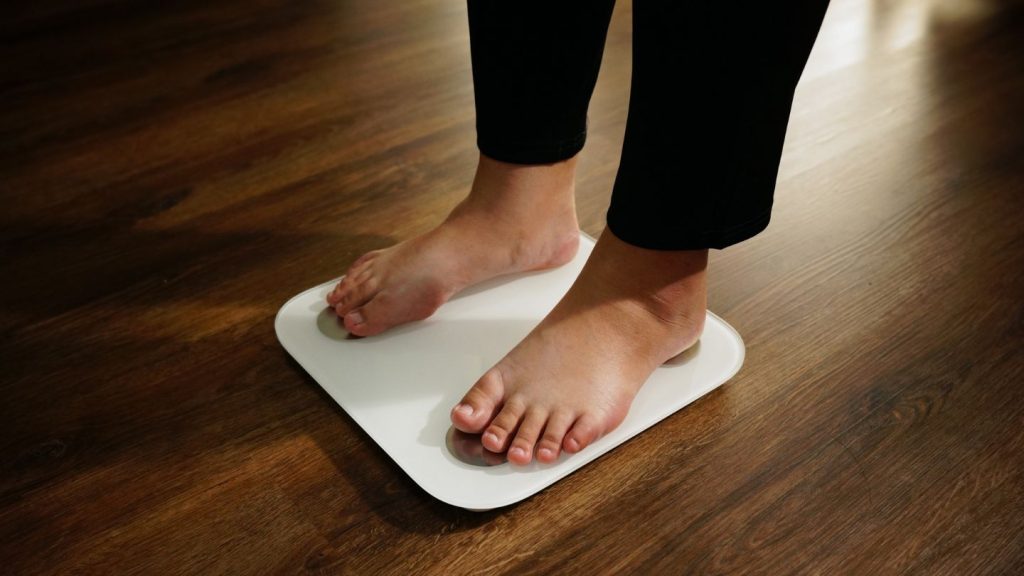
Can Being Overweight Cause Joint Pain? Understanding the Impact and Solutions
Excess weight can impact more than just your overall health—it can also take a serious toll on your joints. Many people wonder if being overweight directly causes joint pain or if other factors are at play. In this blog, we’ll explore the connection between weight and joint health, how carrying extra pounds can strain your body, and what steps you can take to find relief and improve mobility. Let’s dive in!
Key Takeaways
- Excess weight causes significant stress on weight-bearing joints, leading to chronic pain and increasing the risk of osteoarthritis.
- Obesity markedly raises the risk of developing joint disorders, with individuals having a BMI over 30 at a heightened risk for osteoarthritis and related conditions.
- Weight loss through effective management strategies can alleviate joint pain, reduce inflammation, and improve overall joint health.
How Excess Weight Contributes to Joint Pain
Excess weight not only impacts the figures reflected on your weighing scale but also exerts considerable strain on your joints. The knees and hips, which bear much of our body’s weight, are especially vulnerable. As a result of this increased burden, there can be persistent joint pain and an accelerated deterioration in the joint tissues—factors that elevate the probability of succumbing to osteoarthritis—a prevalent disorder associated with excess weight.
Yet, it is important to note that beyond just mechanical load from additional pounds lies another problem: metabolically active fat tissue fosters inflammatory responses, exacerbating joint discomfort and paving the way for ailments such as rheumatoid arthritis. Recognizing both these aspects—the physical stress due to extra weight and inflammation induced by fat cells—underscores why shedding excessive pounds plays a critical role in maintaining healthy joints.
Increased Pressure on Joints
Carrying excess weight significantly strains your joints. Each pound of body weight adds approximately four pounds of extra stress on the knees during walking activities. Over time, this can result in severe deterioration of joint tissues due to excessive wear and tear. The impact is especially noticeable in joints that bear weight, such as the knees and hips, leading to discomfort and a heightened chance of developing osteoarthritis—a condition familiar to many individuals suffering from chronic pain.
Actions like ascending slopes or performing squats intensify this strain even more. Employing strategies like physical therapy alongside managing one’s weight can offer substantial relief by easing pressure on the joints, diminishing persistent pain, and possibly circumventing surgical procedures like knee replacements.
Inflammation from Fat Tissue
Excess weight doesn’t merely serve as a reserve for surplus calories. It engages in the inflammatory process through its active role. The adipose tissue releases pro-inflammatory cytokines, which can amplify joint-related problems and lead to persistent pain. Such inflammation becomes especially severe in conditions such as rheumatoid arthritis, where an aberrant immune response attacks the body’s own joints, causing increased damage and distress.
The inflammatory molecules originating from fat tissue have the potential to exacerbate existing discomfort associated with joint pain and intensify symptoms of inflammatory arthritis. This twofold challenge—added physical strain due to excess weight alongside chemical-driven inflammation—underscores how crucial managing one’s weight is for individuals experiencing pain linked to their joint tissues.
Read more: Diabesity: The Connection Between Diabetes and ObesityObesity as a Risk Factor for Osteoarthritis
Osteoarthritis, the most prevalent joint disorder, is characterized by cartilage deterioration and often results in substantial discomfort and disability. Being overweight significantly contributes to this ailment’s onset as excessive weight intensifies stress on joints that support weight, particularly knees. This additional pressure accelerates cartilage degradation, leading to persistent pain. Hence, managing one’s weight is a critical component of osteoarthritis prevention and treatment.
Individuals struggling with obesity face an increased likelihood of developing osteoarthritis compared to those maintaining a normal weight. Research indicates that obese individuals experience arthritis more frequently than their leaner counterparts. Exploration will delve into how obesity amplifies risks associated with osteoarthritis development—taking into account differences between genders regarding risk factors for the condition.
Higher Risk in Obese Individuals
Being overweight substantially increases the likelihood of developing osteoarthritis. Specifically, individuals whose body mass index (BMI) exceeds 30 kg/m2 are at a heightened risk, with obese patients experiencing double the lifetime chance of manifesting symptomatic osteoarthritis than their counterparts maintaining a normal BMI. The primary factor for this increased risk is the greater mechanical pressure on joints, which expedites wear and tear on cartilage.
Research has indicated that knee osteoarthritis occurs more frequently in those who are obese compared to people with a healthy weight. Obese women have nearly fourfold higher odds of suffering from knee osteoarthritis, while for obese men, the chances are even steeper.
To mitigate the dangers associated with both arthritis and related health complications, it’s crucial to preserve an appropriate body mass by managing one’s weight within a healthy range.
Gender Differences in OA Risk
Studies have found that gender plays a significant role in the association between obesity and osteoarthritis. Women who are obese are at an elevated risk of developing knee osteoarthritis compared to men, with body mass index (BMI) and past injuries having a more pronounced effect on women’s likelihood of experiencing OA. The progression of this condition may also be influenced by hormonal variances, which could heighten women’s vulnerability to joint-related problems.
Women carrying excess weight have almost quadruple the chance of suffering from knee osteoarthritis when contrasted with those maintaining a normal weight. For overweight men, this risk increases fivefold. These findings highlight the necessity for implementing weight management measures tailored specifically to address risks unique to each gender.
Impact on Other Joint Disorders
Obesity not only affects osteoarthritis but also plays a crucial role in the progression of other joint-related disorders, underscoring the importance of maintaining a healthy weight for optimal joint health. Being overweight is identified as the most changeable risk factor linked to diseases like rheumatoid arthritis, gout, and fibromyalgia. These conditions can be aggravated by both increased inflammation and additional mechanical stress that often comes with carrying excess weight.
In this section, we will delve into how obesity intensifies these ailments’ severity and advancement while highlighting how managing one’s weight is key to reducing their effects. By tackling root contributors to joint discomfort, individuals can achieve considerable relief from pain and enjoy an enhancement in their daily living standards.
Rheumatoid Arthritis
Rheumatoid arthritis (RA) is a condition characterized by inflammation, where the immune system mistakenly targets the body’s joints, causing lasting pain and joint harm. Being overweight can aggravate RA as it heightens overall inflammation in the body, which may amplify symptom severity and hinder efforts to reach remission. This occurs because adipose cells secrete substances that increase inflammation, thereby exacerbating joint discomfort and promoting Musculoskeletal complications.
For those living with both obesity and RA, there tends to be an elevation in disease activity scores that reflects intensified symptoms. Consequently, managing one’s weight emerges as a pivotal element of treatment for individuals with rheumatoid arthritis. This strategy helps diminish inflammatory responses while simultaneously improving joint health overall.
Gout and Fibromyalgia
Gout, a joint condition that is intricately connected to obesity, can arise from elevated uric acid concentrations typically found in overweight individuals. This surplus of uric acid may crystallize within the joints and trigger severe pain and inflammation, which are hallmarks of gout attacks. By maintaining a healthy weight, one can lower levels of uric acid and diminish the likelihood of experiencing these painful episodes.
Similarly prevalent in those with excess weight is fibromyalgia—a disorder marked by pervasive musculoskeletal discomfort. The heightened overall inflammation and increased sensitivity to pain brought on by carrying extra pounds tend to intensify symptoms associated with fibromyalgia. Consequently, controlling one’s weight plays a vital role in managing this condition effectively as part of an overarching approach aimed at enhancing life quality for sufferers.
The Role of Weight Loss in Reducing Joint Pain

Shedding excess weight is crucial for diminishing joint pain and augmenting the functioning of joints. Lightening the burden on the joints that bear body weight can lead to a notable decrease in discomfort and an improvement in their range of movement. Managing one’s weight effectively mitigates not just the mechanical strain placed upon these joints but also curtails inflammation-related processes that exacerbate joint pain.
Our discussion will revolve around various health advantages associated with losing weight, along with imparting actionable methods to achieve and preserve a healthy weight as part of efforts to lose weight. By setting attainable objectives, engaging in regular physical activities, and adapting nutritional habits, individuals can proactively manage their joint well-being.
Health Benefits of Losing Weight
Shedding excess weight can yield a plethora of health advantages, especially for individuals experiencing joint pain. It is estimated that for each pound of additional weight carried, the knees endure roughly four pounds of extra pressure during ambulation. Consequently, even a slight decrease in body weight can bring about considerable relief of joint discomfort and enhance general well-being.
Research has demonstrated that merely reducing one’s body weight by 5% may result in appreciable reductions in the severity of joint pain. Conversely, diminishing body mass by 10% is associated with marked enhancements not only in the experience of pain but also in functional capability and overall life quality. These findings highlight how critical it is to maintain appropriate body weight to preserve both joint health and comprehensive physical wellness.
Effective Weight Loss Strategies
A successful approach to losing weight involves integrating healthy eating habits, consistent physical activity, and behavioral reinforcement. It’s more sustainable to lose weight at a gradual rate of 1 to 2 pounds each week, which also aids in keeping the weight off long-term. Combining aerobic exercises and resistance training can maximize the results for individuals aiming to shed extra pounds.
Having support from loved ones is crucial as it greatly assists people in remaining dedicated and motivated toward achieving their weight loss objectives. Embracing an all-encompassing strategy contributes not only to enduring weight loss but also enhances joint health.
Managing Weight for Joint Health

Maintaining a healthy weight is crucial for preserving the health of your joints and diminishing discomfort. This can be achieved by keeping track of one’s Body Mass Index (BMI), committing to nutritious dietary practices, and consistently participating in physical exercise. A slight reduction in body mass can profoundly alleviate joint pain and enhance overall well-being.
Keeping an eye on both BMI and waist circumference, combined with non-invasive methods of managing weight, assists people in reaching and sustaining a weight that is conducive to their health.
Monitoring Body Mass Index (BMI)
It is essential to consistently check both BMI and waist circumference in order to manage weight properly. When an individual’s BMI reaches or exceeds 30, it is considered obese, so keeping track of these numbers allows for necessary lifestyle changes. By ensuring a healthy weight through ongoing observation, individuals can considerably diminish the likelihood of experiencing joint pain and associated health issues.
By keeping tabs on their BMI and waist size, people are better equipped to grasp their body composition, which enables them to proactively control their weight for enhanced joint well-being.
Surgical Options for Severe Obesity

Individuals dealing with extreme obesity may find a practical option for considerable weight loss through bariatric surgery. Procedures like laparoscopic sleeve gastrectomy and gastric bypass are tailored to promote major weight reduction and enhance overall health.
An explanation of these surgical alternatives will be provided, including a discussion of their respective advantages.
Read more: Top 5 Steps to Prepare for Weight Loss Surgery
Bariatric Surgery Overview
Laparoscopic Sleeve Gastrectomy and Roux-en-Y Gastric Bypass are two of the primary bariatric surgeries aimed at aiding obese individuals in achieving considerable weight reduction. At Wellstar, a variety of bariatric surgery choices is provided to ensure that each patient’s unique requirements are addressed with personalized treatment plans.
By opting for these surgical interventions, patients can look forward to sustained weight management and an enhanced standard of living. It is crucial for those considering their path toward losing weight to comprehend the various alternatives on offer so they can make knowledgeable choices regarding their health journey.
Benefits of Bariatric Surgery
Bariatric surgery offers more than just considerable weight loss. It often leads to enhanced physical performance and lessens joint pain by reducing the burden on joints that support body weight. There may be cases where joint discomfort continues or even intensifies following the procedure.
From a broader perspective, bariatric surgery brings about an improved quality of life and diminishes health risks linked with obesity. Patients who achieve major weight reduction through this surgery can find relief from joint pain, contributing positively to their general health.
Read more: Exploring the Different Types of Weight Loss Surgeries
Taking the First Step Towards Healthier Joints
The connection between obesity and joint pain is undeniable. Carrying excess weight increases strain on joints, leading to pain, inflammation, and reduced mobility over time. The good news is that even small weight reductions can significantly ease joint pressure, improve mobility, and enhance overall well-being. Addressing obesity through sustainable lifestyle changes or medical interventions is a crucial step toward achieving long-term joint health.
At Wellstar Comprehensive Bariatric Services, we are dedicated to helping individuals overcome the challenges of obesity. We provide weight loss surgery in Smyrna, Cobb, Austell, LaGrange, West GA, and Marietta with personalized guidance based on lifestyle changes. Contact us today to explore how we can help you achieve your weight loss goals and improve your quality of life.
Frequently Asked Questions
Can heavyweight cause joint pain?
Yes, excess weight can indeed burden the joints and lead to pain, particularly in the knees. Losing weight can relieve this strain and reduce joint discomfort.
How does excess weight contribute to joint pain?
Carrying excess weight intensifies joint pain due to the increased strain it places on joints that support weight and because fat tissue can lead to inflammatory responses.
By effectively controlling one’s weight, a considerable reduction in this type of pain can be achieved.
What are the benefits of losing weight for joint health?
Losing weight offers substantial benefits for joint health by reducing pain and improving mobility, which eases the mechanical stress on joints.
This can lead to enhanced overall joint function and quality of life.
Are there gender differences in the risk of developing osteoarthritis due to obesity?
Research indicates that due to factors like BMI and previous injuries, women face a higher risk than men of developing knee osteoarthritis as a result of obesity.
What non-surgical weight management options are available?
Non-surgical weight management options focus on dietary changes, exercise routines, and behavior modification programs.
A medically supervised program can provide tailored support, including professional monitoring and guidance from dietitians.
